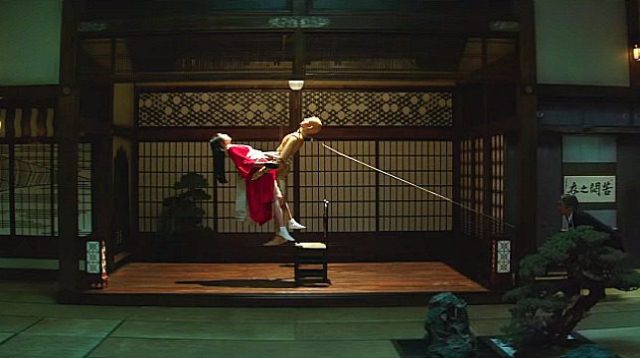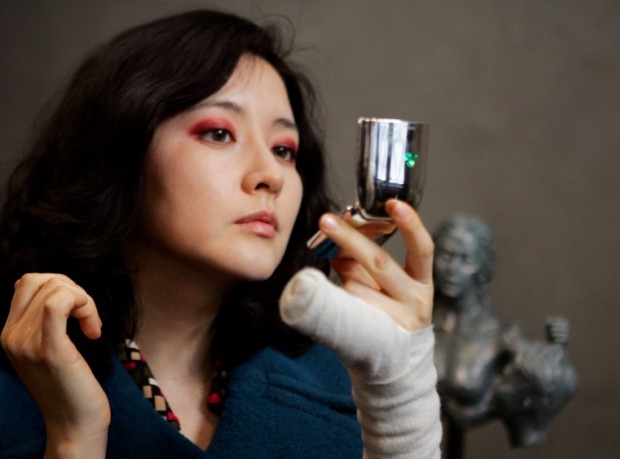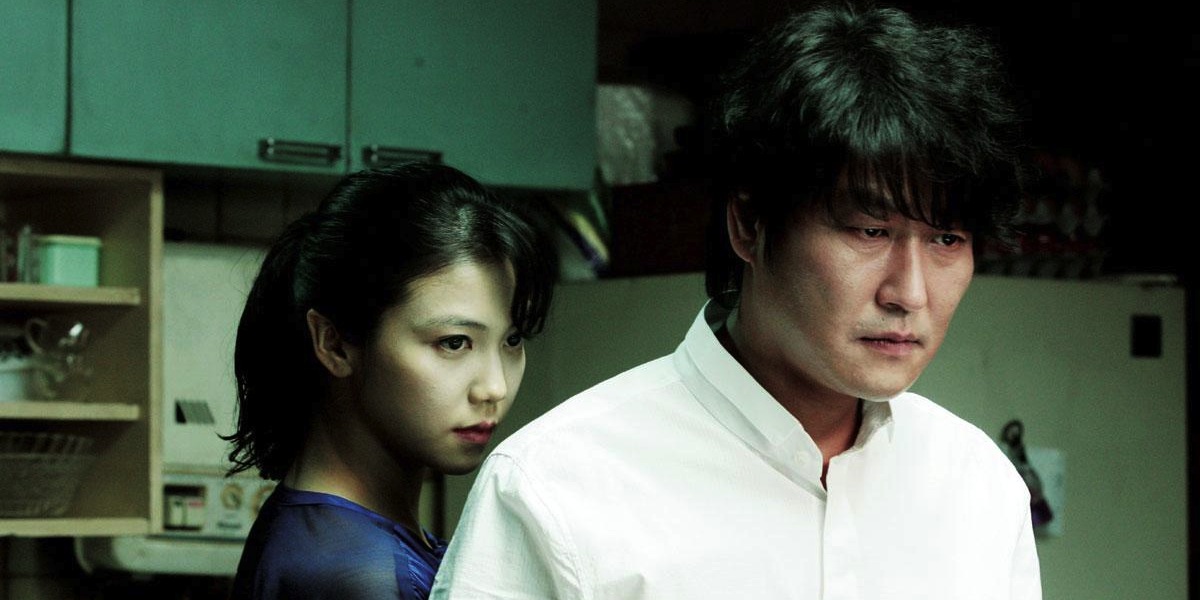6. Transcendence of the melodrama genre

The majority of Park’s films includes a strong melodramatic sense, which, however, differs a great deal from the usual practices of Korean cinema, where the particular genre is, in fact, the most widely beloved.
Park transcends the genre by presenting it in its most extreme and even preposterous form, and the examples are many. One example is the scandalous vampire melodrama that occurs in “Thirst”, through the dead-end romance between a vampire-priest and the wife of his childhood friend. One more occurs through Dae-su’s fate in “Oldboy,” where the melodrama reaches the borders of the ancient tragedy.
In “Sympathy for Mr. Vengeance”, the melodrama is evident in all the characters’ situations, but again transcends the genre through the notion of revenge, resulting once more in true tragedy.
In “I’m a Cyborg, But That’s OK”, it reaches a surrealistic point through the concept of the girl who believes she is a cyborg, and is about to die from starvation, since she thinks that food will ruin her circuits. In this film, Park transforms the melodrama into a genuine, though preposterous, romance.
7. Abnormal eroticism

Another concept Park has taken into its extremes is eroticism, a tactic that also features in the majority of his works. Park achieves this extremity, particularly through the highly unusual couples that constitute each relationship.
A terrorist and a deaf-mute in “Sympathy for Mr. Vengeance”. A father and his daughter in “Oldboy”. A kidnapper-extortionist who actually demands one of his students have sex with him as a compensation for letting her live in his house.
A vampire priest and his childhood friend’s wife, who also becomes a vampire, eventually, in “Thirst”. A man, his sister in law, and her niece in “Stoker”. An ex-thief who becomes a maid in an aristocratic house and the lady of the house, in “Handmaiden”.
As most of the sex scenes in Park’s films are highly graphic, the erotic element usually has a tremendous impact on the audience, as it is frequently followed by fierce repercussions.
8. Violence in its most lyrical form

Evidently, Park’s films are filled with violence. However, this violence is not there to impress or to draw in the audience that enjoys intense action scenes, but to present the director’s messages in extreme fashion. Furthermore, Park’s scenes that entail it are usually works of art.
The scene in “Sympathy for Lady Vengeance”, where each relative of the child-victims assaults the bound Mr. Baek, is a distinct example, as in this particular scene, violence is presented as a necessity, an act that becomes unavoidable when humans reach the end of their limits.
Another great scene of violence takes place in “Thirst” when Tae-ju assaults the people who realize she was the one who killed her husband. The notion that violence can be a byproduct of paranoia and of a sense of omnipotence becomes clear in this scene, which is magnificently shot in a narrow white corridor.
In the famous corridor scene in “Oldboy”, violence is once more presented as a necessity, but this time a practical one and not a psychological one, as in “Sympathy for Lady Vengeance”. This time, the lyricism emerges from the magnificent technical aspects of the scene, which took 17 takes over three days to achieve its obvious, unedited perfection.
9. Depiction of the darkness in human’s souls

According to Park, all humans have darkness in their souls, which lingers, usually waiting for an extreme event or circumstance in order to emerge.
This becomes clear in “Thirst”, through Sang-hyun, a Catholic priest who acts solely out of compassion and kindness in all the aspects of his life. However, when he becomes a vampire, he resorts to stealing, adultery, and murder, violating most of the rules his religion preaches. The same applies to Tae-ju, who, after becoming a vampire, turns into a cold-blooded murderer.
In “Sympathy for Lady Vengeance”, this trait is witnessed in the victim’s relatives, all of whom are everyday people, but in order to take revenge and to punish the perpetrator, they turn into sadistic killers, and subsequently into calculating criminals.
In “Sympathy for Lady Vengeance”, the darkness is evident in every character in the film, who are willing to resort to violent extremes in order to achieve their goal.
10. Story and characters come before production values

As Park has stated, the technical part comes second in his movies, with the first role being reserved for the characters and the story. His procedure starts with the writing, and the search for the audiovisuals comes after the script has been concluded.
Park insists that he is, firstly, a storyteller, and that every element of his films must support the story in the best way possible. This trait, however, does not mean that the technical aspect is neglected; on the contrary, as we have already seen, Park’s film are also masterpieces in that department.
This trait has resulted in all the elaborate scripts and excellent characters that appear in Park’s films, particularly in the “Vengeance Trilogy”, in “Thirst” and in “I’m a Cyborg, But That’s OK”. What is astonishing about this trait is that the secondary characters and the “evil” ones have nothing to envy from the protagonists, as Park spends a large amount of time writing every single character in his films.
In terms of story, Park has presented a number of original, challenging, intricate, and masterful stories, which are probably the main reason for the position he carries in world cinema.
Author Bio: Panos Kotzathanasis is a film critic who focuses on the cinema of East Asia. He enjoys films from all genres, although he is a big fan of exploitation. You can follow him on Facebook or Twitter.